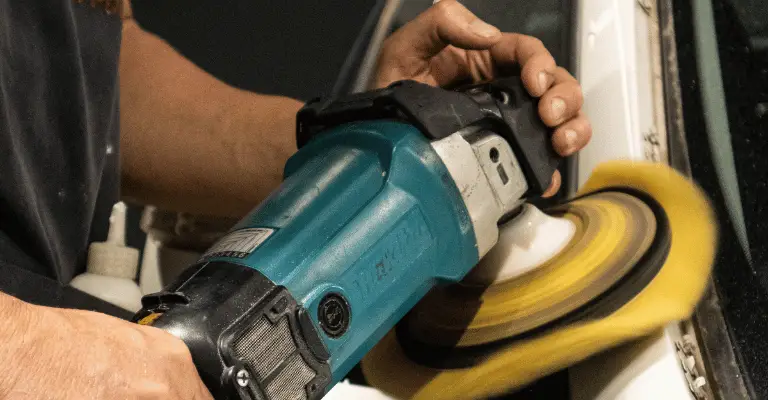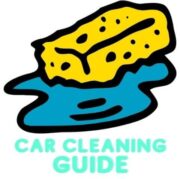Last Updated on October 3, 2023 by Chase Manhattan
Ever wondered how to keep your vehicle’s ceramic coating shining like new for longer? The brilliance of your car’s ceramic coating isn’t just about its initial application; it’s also about its maintenance. In this guide, we will delve into the essential steps on how to maintain a ceramic coating, ensuring that it continues to provide that sleek, glossy finish that turns heads wherever you go. Also, we’ll uncover the do’s and don’ts to guarantee your coating’s longevity.
Whether you’re a new car owner or a seasoned motorist seeking to protect your prized possession, this guide is an invaluable resource for you. Let’s dive in, shall we?
- How to Clean Car Carpets Quick and Easy - July 10, 2024
- Can You Touch Up Clear Coat? Yes and No (Here’s Why) - November 25, 2023
- How To Wax A Car By Hand: A Comprehensive Guide - November 14, 2023
Quick Navigation
Unknown Benefits of Maintaining Ceramic Coatings
When it comes to protecting the paint on our cars, most of us rely on wax or sealant. But have you ever considered ceramic coating? If you haven’t, you’re missing out on a whole host of benefits. In this section, we’ll delve into some of the lesser-known advantages of maintaining ceramic coatings on your vehicle.
Firstly, the ceramic coat maintenance ensures that your car looks new all the time. This is because ceramic coatings are hydrophobic. They repel water and dirt, making your car easy to clean and maintaining its shiny exterior. Over time, this can save you money as you won’t need to spend as much on car cleaning services.
Secondly, ceramic coatings provide a level of protection that wax and sealants just can’t match. They form a hard, protective layer over your car’s paint, shielding it from UV damage, bird droppings, acid rain, and even minor scratches. This can significantly extend the lifespan of your car’s paint job, potentially saving you thousands in the long run.
Related article: Ceramic Coat vs Wax
What Happens If A Ceramic Coating Is Neglected?
Now that we understand the benefits of ceramic coatings, it’s crucial to know what happens if you neglect them. Unlike wax or sealants, ceramic coatings require preparation and a certain degree of care to function effectively. Without proper maintenance, your coating could deteriorate and lose its effectiveness much faster than expected.
Firstly, a neglected ceramic coating can lose its hydrophobic properties. This means that dirt and water will no longer be repelled by the surface, causing your car to look dirty more often. Additionally, this can also make your vehicle harder to clean, as dirt and grime will stick more easily to the surface.
Secondly, a neglected ceramic coating can lose its protective qualities. Over time, the hard protective layer can become worn and thin, leaving your car’s paint exposed to potential damage. This could mean that your car becomes more susceptible to scratches, UV damage, and other environmental hazards.
Read more: What is clear coat protectant?

Positive Maintenance Practices
Always refer to the manufacturer’s recommendations for any specific product or tool you intend to use on your ceramic coating. Using the right products and tools will help you maintain the coating’s integrity and prolong its lifespan. Here are some of the practices I like to follow in my own maintenance routines:
- pH-Neutral Car Shampoo: Use a high-quality pH-neutral car shampoo when washing your vehicle. pH-neutral formulas are gentle on the ceramic coating and help preserve its hydrophobic properties.
- Microfiber Wash Mitt or Sponge: Opt for a soft and plush microfiber wash mitt or sponge to minimize the risk of scratching the coating. Avoid using brushes or abrasive materials that can damage the ceramic coating.
- Microfiber Towels: Choose high-quality microfiber towels for drying your vehicle after washing. These towels are absorbent and gentle on the coating’s surface, minimizing the risk of introducing scratches or swirl marks.
- Automotive Detailing Clay Bar or Mitt: To remove bonded contaminants, use a dedicated automotive detailing clay bar or a clay mitt. These tools effectively lift contaminants without harming the ceramic coating.
- Ceramic Coating Boosters or Maintenance Sprays: Depending on the specific ceramic coating you have applied, consider using a ceramic coating booster or maintenance spray. These products are designed to enhance the coating’s hydrophobic properties and provide additional protection. Follow the manufacturer’s instructions for best results.
Related Article: How long does a ceramic coating take to cure?
Maintenance Mistakes to Avoid
Maintaining a ceramic coating requires careful attention to detail to avoid common mistakes that could compromise its performance. Here are some mistakes to avoid when maintaining ceramic coatings:
- Using Harsh Chemicals: Avoid using harsh detergents, strong solvents, or acidic cleaners on your vehicle’s ceramic coating. These substances can deteriorate the coating and diminish its protective qualities. Stick to pH-neutral car shampoos and gentle cleaning products specifically designed for automotive use.
- Using Abrasive Tools: Avoid using abrasive tools such as brushes or low-quality towels that can cause scratches or swirl marks on the coating. Always opt for soft microfiber wash mitts, clay bars, and towels to minimize the risk of damaging the coating’s surface.
- Neglecting Regular Cleaning: Regularly washing your vehicle is crucial to prevent the buildup of dirt, contaminants, and road grime that can compromise the ceramic coating. Neglecting regular cleaning can lead to decreased hydrophobic properties and reduced protection over time.
- Skipping Decontamination: Decontamination is essential to remove bonded contaminants such as tree sap, bird droppings, or road tar. Failing to remove these substances promptly can cause them to etch into the coating and potentially damage it. Regularly inspect and decontaminate your vehicle as needed.
- Applying Products Incorrectly: Follow the manufacturer’s instructions when applying ceramic coating boosters or maintenance sprays. Applying these products incorrectly or excessively can lead to uneven coatings, streaks, or product buildup that may affect the coating’s appearance and performance.
- Ignoring Regular Inspections: Regularly inspect your vehicle’s ceramic coating to identify any areas that require touch-ups or reapplication. Ignoring signs of wear or degradation can result in reduced protection and compromised aesthetics. Stay vigilant and address any issues promptly.
Want to protect that precious ceramic coating? Read this: Best Car Soap for Ceramic Coating Care
Why You Should Always Clean Your Materials (Microfiber towels, buffers, etc,.)
You might be wondering why it’s so important to clean your materials like microfiber towels and buffers regularly. Let me explain.
Firstly, dirty materials can scratch your car’s ceramic coating. Dirt, grime, and other debris can become trapped in the fibers of your cleaning tools. When you use them to clean your car, this debris can be dragged across the surface, potentially causing scratches or streaks to be removed later.
Secondly, dirty materials can reduce the effectiveness of your cleaning efforts. If your cleaning tools are dirty, they won’t be able to clean your car as effectively. This could mean that you need to clean your car more frequently, which could be time-consuming and costly.
Related articles:
> Best Microfiber Towels for Ceramic Coating
> Best Detail Spray for Ceramic Coated Cars

How To Maintain A Ceramic Coating: Step by Step Guide
Now, let’s get into the nitty-gritty of how to maintain ceramic coating on your car. Follow this step-by-step guide to ensure your coating remains effective for as long as possible.
Step 1: Wash your car regularly. This will prevent dirt and grime from building up on the surface of the coating.
Step 2: Use a high-quality car shampoo. This will help to preserve the integrity of the coating, ensuring it remains effective.
Step 3: Dry your car properly after washing it. This will prevent water spots from forming on the coating, which could damage it over time.
Step 4: Avoid using abrasive materials to clean your car. These can scratch the ceramic coating, reducing its effectiveness.
Step 5: Clean your cleaning materials regularly. This will ensure they remain effective and won’t scratch your coating.
By following these steps, you can ensure your ceramic coating remains effective for as long as possible, helping to protect your car’s paint and keep it looking new. And remember, ceramic coating care and maintenance is not a one-time task. It’s an ongoing commitment that can significantly extend the lifespan of your car’s paint job and save you money in the long run.
Video Reference
FAQs and Related Questions
What are the recommended steps for maintaining a ceramic coating on my vehicle?
To maintain a ceramic coating on your vehicle, regularly wash it using a pH-neutral car shampoo and a microfiber wash mitt or sponge. Dry the vehicle gently with a microfiber towel or blower. Remove bonded contaminants with a clay bar or mitt and lubricant when needed. Polish the coating if necessary. Consider using a ceramic coating booster or maintenance spray to rejuvenate the coating’s hydrophobic properties.
How often should I clean and apply additional protection to my ceramic coating?
Clean your vehicle every two weeks to a month, depending on usage and environmental conditions. Apply additional protection, such as a ceramic coating booster or maintenance spray, every three to six months to revitalize the coating’s hydrophobic properties. Regularly inspect the coating for signs of wear or diminished performance that may require reapplication or touch-up.
Are there any specific products or tools I should use for maintaining a ceramic coating?
Use a pH-neutral car shampoo, microfiber wash mitt or sponge, and microfiber towels when washing and drying your vehicle. For decontamination, use an automotive detailing clay bar or mitt with lubricant. Consider using a ceramic coating booster or maintenance spray as recommended by the manufacturer for additional protection and rejuvenation of the coating.
What are some common mistakes to avoid when maintaining a ceramic coating?
Avoid using harsh chemicals or abrasive tools that can damage the coating. Stick to pH-neutral car shampoos and gentle cleaning products. Regularly wash your vehicle to prevent dirt buildup. Do not skip decontamination to avoid etching contaminants into the coating. Follow the manufacturer’s instructions when applying ceramic coating boosters or maintenance sprays. Regularly inspect the coating for signs of wear and address any issues promptly.


